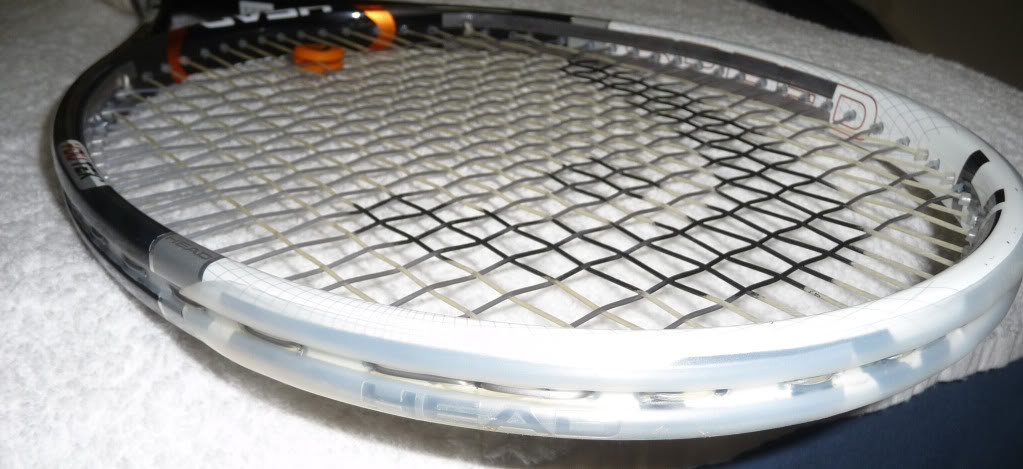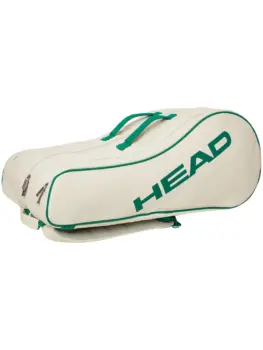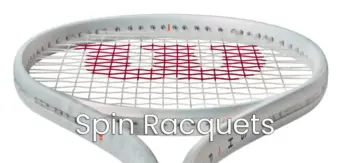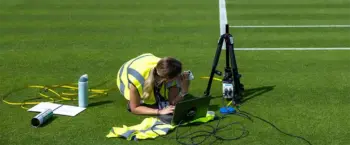It’s 2018 and time to kick off the new year with some more racquet lingo and look at some key phrases for us tennis gear freaks such as twist weight, plow through and recoil weight.
I’ve got a question from loyal reader Maxim in Russia about if adding weight in different places using the Tennis Warehouse Customization tool will impact the racquet the same considering that the swing weight, balance and static weight is the same.
He sent me the picture below and wondered if adding weight in all three examples will create the same effect on plow-through and recoil weight. To be able to answer this question we need to understand what plow-through and recoil weight is.
There’s actually even a plow-through measuring tool on the TW University website if you want to dig deeper. As I hope you understand and agree with, you don’t need a thorough understanding of these concepts to know what racquet works well for your game. But if you want to become a true tennis nerd, you’ll probably enjoy digging deeper. I again want to recommend YouTube “Racquettech” and his videos on these quite technical topics.
Back to Maxim’s question. I’m no physicist but logically, the difference in plow-through with all these options will be marginal. Option three adds small amount of weight in the handle and will naturally have a slightly lower recoil-weight and a hint better plow-through, but will hardly be recognisable to the player.
This is the definition of plow-through according to the TW University:
Plow-through is a term of art to quantify and describe in everyday terms what happens to the racquet during impact. Plow-through has been defined as the percentage of pre-impact racquet velocity remaining immediately after impact. This velocity is calculated at the impact location. During impact the racquet hitting location decelerates by recoiling, twisting and rotating backward.
Some players prefer their racquets to have a lot of weight in the head, with a high twist weight, meaning they are extremely stable on contact and won’t “twist” so much in the hand. This is a reason for adding lead tape at 3 and 9 or the famous Wilson PWS (perimeter weighing system). Having a high twist weight will naturally mean your specs will give you a good plow-through effect and a high recoil-weight.
Here’s the definition of twistweight by Tennis Industry Magazine:
What is twistweight?
The twistweight (also known as the polar or roll moment of inertia) is a measure of the stability of the racquet to resist twisting around the racquet’s long axis. If you hit a ball dead smack in the center of the head, the racquet will recoil, but not twist around its long axis. If you hit a ball and inch or so away from the axis toward the 3 o’clock or 9 o’clock side of the strung area, in addition to recoiling, the racquet will twist around its long axis. The bigger the racquet’s twistweight, the less the racquet will twist when the ball impacts off-axis. In other words, it will be more stable against miss-hits.
What determines the twistweight of a racquet?
The technical definition of twistweight is the sum of the square of the distance of every bit of mass in a racquet from the long axis. This definition does not directly help a player, because that sum is an impossible calculation. The wider the racquet’s head, the greater is the twistweight. Because twistweight goes as the square of the distance the mass is from the axis, if a racquet is 25 percent wider (10 inches versus 8 inches) it will have a 50 percent greater twistweight. Adding lead tape at 3 and 9 o’clock will increase the twistweight, but adding tape only at 12 and 6 o’clock will not increase the twistweight.
Recoil weight works differently than twistweight however.
Imagine drawing a line through the center of the racquet parallel to the long axis of the racquet. Adding weight away from this center line will increase the twistweight, and the further the weight is, the more the twistweight increases.
Now imagine drawing a line perpendicular to the long axis of the racquet, through the balance point of the racquet. Adding weight off of this line will increase the recoil weight of the racquet, and again the further the weight is, the more the recoil weight will increase.
Thus, adding weight to 3+9 will increase BOTH the twistweight and recoil weight of the racquet. Adding weight at 12 will increase the recoil weight even more, but the twistweight significantly less/negligibly (depending on the length of the lead strips used).
Adding weight to the handle will have virtually zero effect on twistweight, but will add to the recoil weight.
I hope this gives some clarification on how adding lead tape in various locations can affect swing weight, twistweight and recoil weight.
Please remember however that if you have a racquet that feels good and you play well with, there is no need to get too bogged down in these topics because that might divert you from improving your technique and ultimately your tennis game!
Are there any other topics I should write about here on Tennisnerd.net? Please comment below and I will try to cover it in upcoming posts.
***
Do you like Tennisnerd? Don’t miss a word or video by stalking us on social media. Every like and follow is appreciated!
YouTube
Instagram
Twitter
Facebook Page
Amazon Influencer
Buy tennis gear
EU
Racquet Depot
Pro Direct Tennis
USA
Tennis Express
Do It Tennis
Amazon.com
Racquet buying guides
Here is a great racquet buying guide to get you started.
What tennis racquet should I buy?
Top tennis racquets to buy right now
The Gear of the Year 2017
The Gear of the Year 2016
Tennis racquets for juniors
Tennis racquets for kids
Popular posts
What the ATP pros play
Questions about pro stock tennis racquets
Is a pro stock racquet better than a retail one?
Do professional players change racquets?
Racquet Commitment Issues


















Happy new year
I like to know about racquet flex vs frequency.
-Others lingos/themes to dig further-
Box, oval, roundish, D, V? etc. beam shapes;
Tour, Team, L, S specs;
Graphite x Aluminum;
Lateralization;
16×18 vs 16×20 / 18×16 vs 18×20;
Racquet/strings preferences and/or customization: What is real and Whats is placebo?